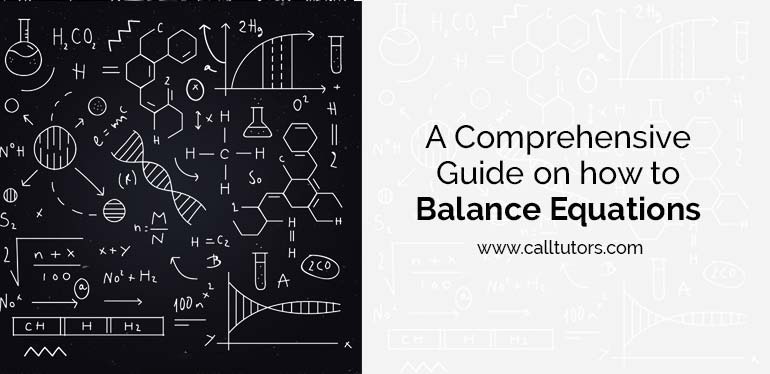In this blog, we are going to share with you how to balance equations in chemistry. Generally, a balanced equation is an equation, usually for a chemical reaction.
In the chemical equation, there are several atoms for every element in the reaction, and there is a total charge, which is the same for both the products and the reactant. Also, in some other words, the charge and the mass are balanced on each side of the reaction.

A chemical equation represents the formula of the substance of chemical which is reacting and the element that they are produced. The total number of atoms of the reactant and the products need to be stable. Below we are showing how to balance equations.
Balancing Chemical Equations
Table of Contents
Let us take a look at the scale. We can see it easily that it is unbalanced, from the right side (red), more than weighing on the left side (blue). In respect for both sides that need to be stable/balanced, we necessity to put some weight or mass on the left side unless they become the same.
As like us necessity the scale to be balanced on each side, a chemical equation must also be balanced on each side. A balanced chemical equation describes us the constituent, which is involved in the reaction of chemical- the component which responds called reactants and the constituents which are produced (products). In over-all, a compound appears like this:
Reactants🡪Products
As per the law of conservation of the mass, when a ‘chemical reaction’ happens, the product’s mass must be as equal to the reactant’s weight. Thus, the number of atoms in every element does not modify/change in the chemical reaction.
As an outcome, the equation of chemical which describes the chemical reaction wants to be stable. A balanced equation of compound happens when the amount of the atoms comprised in the side of reactants is equal to the total amount of atoms in the side of products. Let us look at the chemical balance equation that is showing the chemical reaction:
In the above reaction of a chemical equation, the N2, which is nitrogen, is reacting with the H, which is Hydrogen to form NH3, which is called ammonia. Nitrogen and hydrogen are the reactants, and ammonia is the product. As we see at this chemical equation, the chemical equation is not balanced.
The chemical equation is not fully balanced; it is so because, on the side of the reactant, there are possible two hydrogen atoms (H) and two nitrogen atoms (N). Whereas on the product side, there are three hydrogen atoms (H) and only one nitrogen atoms (N). Due to this, the total number of atoms is not balanced on each side.
To balance such type of equation of chemical mention in the above part, we essential to utilize coefficient. A coefficient is a specific number through which we place we place in front of a chemical formula. In the equation of chemical reaction, to form the total number of atoms of nitrogen (N) is balanced/equal on each side. Initially, we put it on a coefficient of two in front of NH3.
Steps how to Balance Equation
Perfect always more to become perfect in a specific field. In overall, to properly balanced an equation, below are some things that everyone needs to do:
- Sum the atoms of every element in the products and the reactants.
- Using of coefficient, put them in the facade of the compounds as required.
For balancing equations, the steps are simple, but it is the procedure of trial and error. Taking some example so that we learn how to balance such equations:
Example 1
This example is the reaction between the oxygen (02) and methane (Ch4), generating the C02 that is carbon-dioxide and H20, i.e., Water.
The above chemical reaction is a type of reaction of combustion; compound counters with the oxygen and generates C02, i.e., Carbon-dioxide and H20 (Water). The method is used to balance the atoms of carbon first. And then the atoms of hydrogen, and the atoms of oxygen.
In this specific type of case, the atoms of carbon are previously balanced. Thus, now we see at the atoms of hydrogen (H). There are four atoms of hydrogen (H) on the side of reactants. And two atoms of hydrogen (H) on the side of products. To stable them, we place a number (coefficient) of two in before of H20.
The atoms of hydrogen (H) are perfectly now balanced in the equation. Because of the number (coefficient) two in front of the H20. And there is a total of four atoms of oxygen on the side of products. To stable/balance the atoms of oxygen on each side, we place a number (coefficient) of two in front of O2. Now the balanced chemical equation appears like this.
Conclusion
The paper provides essential information regarding how to balance equations. Balancing the equations is not an easy task. If you have any problem with writing such type of assignment. You can hire our experts in writing assignments for you. Our experts give you an A+ grade chemistry assignment help with plagiarism free content. You can contact us at any time.



